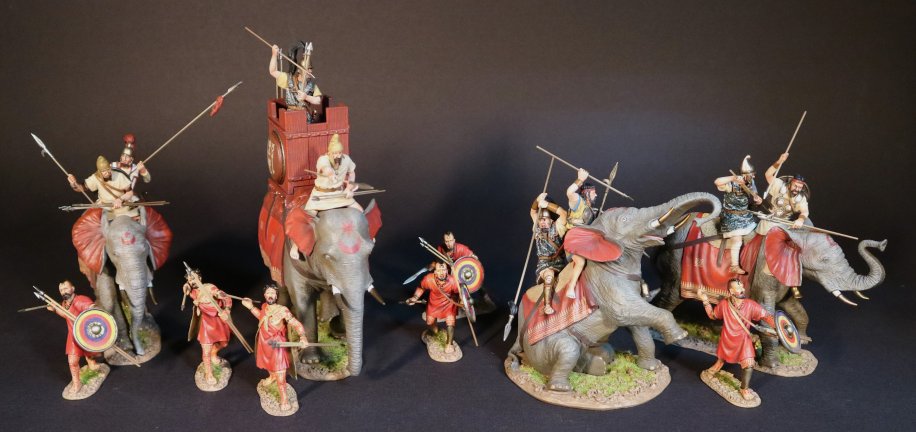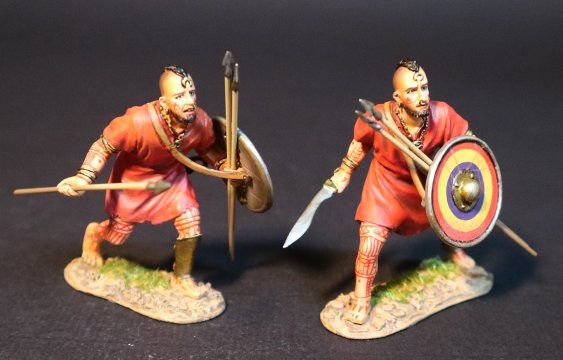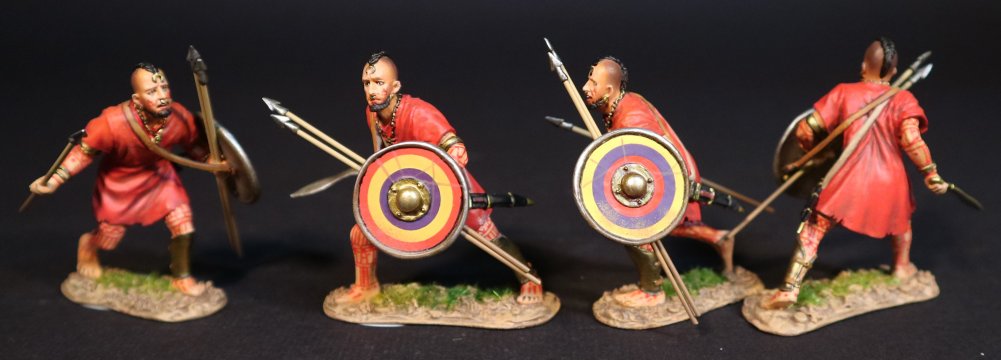- Joined
- Feb 2, 2011
- Messages
- 2,378
NEW RELEASES FOR AUGUST 2024
ARMIES AND ENEMIES OF ANCIENT ROME
THE CARTHAGINIANS
THE BATTLE OF ZAMA 202BC
NORTH AFRICAN ALLIES
Although initially the Carthaginian army was composed only of Citizens of Phoenician origin, it saw increased recruitment of contingents of mercenaries and allies a necessity in order to realize the policy of imperial expansion.
This use of mercenaries saved the metropolitan population from heavy casualties that were not easily replaceable, and it also reflected the Carthaginian concept of war, which was considered simply as an extension of business.
With the enlargement of Punic economic interests the army became more exclusively mercenary and progressively came to include almost all the peoples of the central and western Mediterranean area.
The largest single component of the Punic army usually comprised soldiers recruited or impressed from subject Libyans. These are often referred to as “Africans”, or Liby-Phoenicians. These were mercenaries or in some cases conscripts, subject to service from the tenants of the large African estates.
Eventually these mercenaries were no longer simply troops hired for a single campaign and discharged after a few months service, as had originally been the case, especially during the first Punic War. They were now a professional standing army seasoned by long years of warfare, under the command of skilled generals such as Hamilcar Barca and his sons.

Among the North African allies were the subjected Libyans of the Marmarica, which formed a major part of the light infantry. These were mainly made up from several tribes, Nasamones, Macae from the Cynips river, the tribes of Barce, the Autololes, the ferocious Adyrmachidae, and the Garamantians.
ADYRMACHID WARRIORS
This Libyan tribe called the Adyrmachidae were described as carrying a buckler of many colours ,a sword in the shape of a sickle and would wear a single greave on the left leg. Warriors would have their head shaved except for a central plaited crest, often with a crescent amulet fastened to hang on his brow. Nose rings were also typical for many punic cultures.

CTSK-02
ARMIES AND ENEMIES OF ANCIENT ROME,
THE CARTHAGINIANS,
THE BATTLE OF ZAMA 202BC,
ADYRMACHID WARRIORS.
(3 pcs)

CTSK-02N
ARMIES AND ENEMIES OF ANCIENT ROME,
THE CARTHAGINIANS,
THE BATTLE OF ZAMA 202BC,
ADYRMACHID WARRIORS.
(6 pcs)
** PLEASE CONTACT YOUR LOCAL DEALER FOR FURTHER INFORMATION **
ARMIES AND ENEMIES OF ANCIENT ROME
THE CARTHAGINIANS
THE BATTLE OF ZAMA 202BC
NORTH AFRICAN ALLIES
Although initially the Carthaginian army was composed only of Citizens of Phoenician origin, it saw increased recruitment of contingents of mercenaries and allies a necessity in order to realize the policy of imperial expansion.
This use of mercenaries saved the metropolitan population from heavy casualties that were not easily replaceable, and it also reflected the Carthaginian concept of war, which was considered simply as an extension of business.
With the enlargement of Punic economic interests the army became more exclusively mercenary and progressively came to include almost all the peoples of the central and western Mediterranean area.
The largest single component of the Punic army usually comprised soldiers recruited or impressed from subject Libyans. These are often referred to as “Africans”, or Liby-Phoenicians. These were mercenaries or in some cases conscripts, subject to service from the tenants of the large African estates.
Eventually these mercenaries were no longer simply troops hired for a single campaign and discharged after a few months service, as had originally been the case, especially during the first Punic War. They were now a professional standing army seasoned by long years of warfare, under the command of skilled generals such as Hamilcar Barca and his sons.

Among the North African allies were the subjected Libyans of the Marmarica, which formed a major part of the light infantry. These were mainly made up from several tribes, Nasamones, Macae from the Cynips river, the tribes of Barce, the Autololes, the ferocious Adyrmachidae, and the Garamantians.
ADYRMACHID WARRIORS
This Libyan tribe called the Adyrmachidae were described as carrying a buckler of many colours ,a sword in the shape of a sickle and would wear a single greave on the left leg. Warriors would have their head shaved except for a central plaited crest, often with a crescent amulet fastened to hang on his brow. Nose rings were also typical for many punic cultures.

CTSK-02
ARMIES AND ENEMIES OF ANCIENT ROME,
THE CARTHAGINIANS,
THE BATTLE OF ZAMA 202BC,
ADYRMACHID WARRIORS.
(3 pcs)

CTSK-02N
ARMIES AND ENEMIES OF ANCIENT ROME,
THE CARTHAGINIANS,
THE BATTLE OF ZAMA 202BC,
ADYRMACHID WARRIORS.
(6 pcs)
** PLEASE CONTACT YOUR LOCAL DEALER FOR FURTHER INFORMATION **

